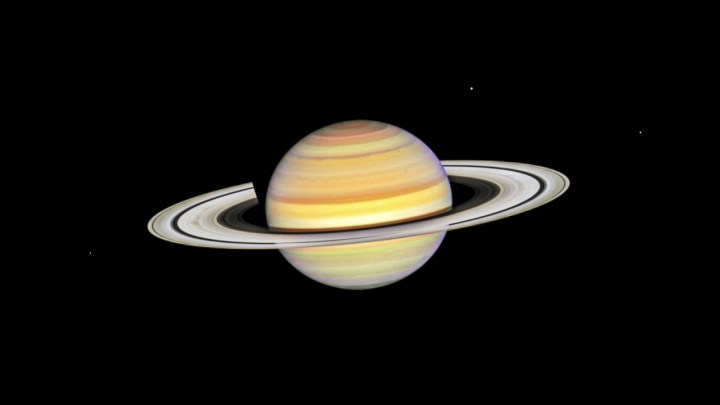The Hubble Space Telescope is investigating something strange about the beautiful rings around Saturn. You might picture Saturn’s rings as perfectly smooth, but in fact, they have some strange dark spots that appear intermittently. These features, called spokes, look like dusty blots spread over the rings and appear for just a few rotations before disappearing again, with some periods having much more spoke activity than others.
These spokes were first observed over 40 years ago by the Voyager 2 spacecraft, but they continue to be something of a mystery. They seem to be linked to seasons on the planet, which are seven years long, and to the planet’s magnetic field. A newly released image taken by Hubble in October this year shows the spokes as dark patches on the rings, observed as part of a program called Hubble’s Outer Planets Atmospheres Legacy (OPAL), which tracks them as they move.

Now is a good time for observing the spokes, as Saturn’s autumnal equinox will occur in May 2025. In the past, researchers have observed a peak in spokes in the periods leading up to and following the equinox. “We are heading towards Saturn equinox, when we’d expect maximum spoke activity, with higher frequency and darker spokes appearing over the next few years,” explained OPAL program lead scientist Amy Simon of NASA’s Goddard Space Flight Center in a statement.
Even though researchers have observed this link between the seasons and the spokes, the exact mechanism that causes them is still unclear. The features are huge, appearing on both sides of the planet and stretching so far across the rings that their size can be larger than the diameter of the Earth. Researchers believe that the spokes are related to solar wind interacting with the planet’s magnetic field.
“The leading theory is that spokes are tied to Saturn’s powerful magnetic field, with some sort of solar interaction with the magnetic field that gives you the spokes,” explained Simon.
But it’s still difficult to predict exactly when and where these spokes will appear, which is why the researchers are keen to use Hubble during this upcoming period.



